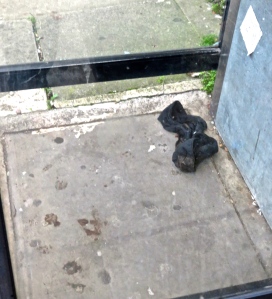Today I finished reading
With devices such as living artworks such as sculpture magnified to be too huge to be accommodated by the eponymous castle and a portrait painting transcending decades to carry the likeness of a future protagonist, Walpole has woven a story of seemingly star-crossed lovers; of deceit; of manipulation; of usurpation; of intrigue; and of thwarted sexually abusive abduction in which a tyrant battles to maintain his ill-gotten possession of title. “At that instant the portrait of his grandfather …. uttered a deep sigh and heaved its breast.”
Romance, links with a bygone past, mystery, and menace; the essential ingredients of the Gothic novel, are all brought to play in this lasting classic of the genre.
Effects of the weather such as winds of varying strength and dramatic claps of thunder; of sudden sounds; of light and darkness are employed to feed the fears of a young woman seeking refuge in unfamiliar corridors and stairways of “a subterranean passage…..blasts of wind that shook the doors she had passed, and which, grating on the rusty hinges, were re-echoed through that long labyrinth of darkness… ” she flees the advances of a powerful man who would make her his possession. “She heard him traverse his chamber backwards and forwards with disordered steps; a mood which increased her apprehensions.”
Much of the story is presented in dialogue between the various protagonists at which the author is very skilled. “..whatever be the cause of —‘s flight, it had no unworthy motive. If this stranger was accessory to it, she must be satisfied of his fidelity and worth ….. his words were tinctured with an uncommon infusion of piety. It was no ruffian’s speech; his phrases were becoming a man of gentle birth.” “Persuade her to consent to the dissolution of our marriage, and to retire into a monastery…..”
The introduction by Devendra P. Varma is most informative, itself in delightfully descriptive prose.
The frontispiece and these other imaginative lithographs are all by the incomparable Charles Keeping.
This evening we dined on Jackie’s penne pasta arrabbiata sprinkled with Parmesan cheese, with which I finished the Malbec.










